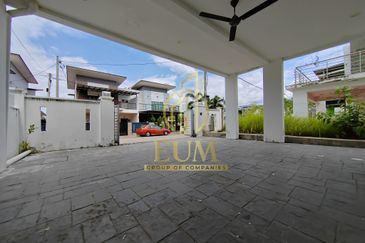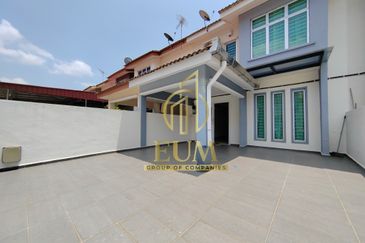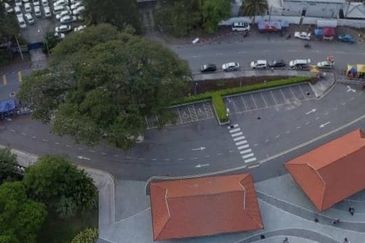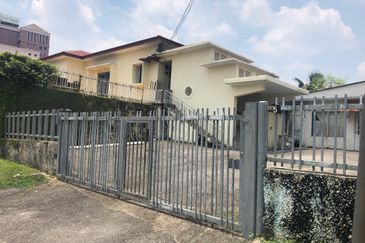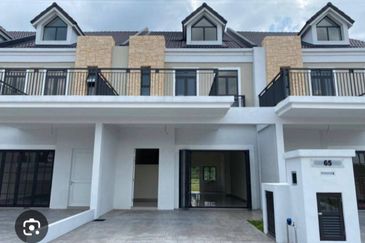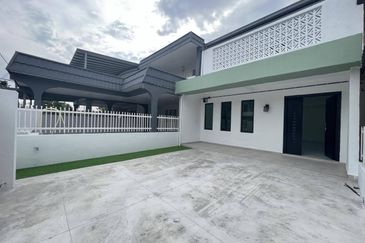PETALING JAYA: The health of the central London housing market continues to surprise observers as the market registered a 1.3% price rise in September, marking the sixth month in a row of positive price growth, said Knight Frank Prime Central London Index for September 2009.
Liam Bailey, Knight Frank’s head of residential research said: “Prices are now only 8.9% lower than they were 12 months ago The strongest areas have been Chelsea, Kensington and Notting Hill – where prices have risen by between 8% and 9% since March.”
However, despite the recent growth, prices are still 18% below their peak in March 2008. While sizable price discount from the top of the market are aiding the growing demand, Bailey believes that the key drivers of price growth remains as follows; tight supply of property, strong overseas demand for central London property and very low interest rates for cash-rich buyers.
Elaborating on the tight supply, Bailey said: “The volume of property on the market in September was down nearly 30% year-on-year (y-o-y). In fact, compared with September 2007, the volume of stock was down by almost 50%. This tight supply has been set against relatively strong demand, with viewing levels and the volume of new applicants noticeably higher -- up 80% and 30% respectively, again y-o-y.”
Bailey also noted that the number of sales taking place in London in the first three weeks of September was 75% higher than the same period last year. Tight supply is expected to remain a feature of the market for 4Q2009 as the number of new properties coming to the market in October is just as restricted.
The market is also aided by cash-rich buyers, those with deposit of 40% or more, who are able to secure ultra-low rates of funding. “Our own anecdotal experience is that the average deposit being paid by buyers and the number of cash purchases is rising. UK buyers have been especially keen to take advantage of low mortgage rate costs,” added Bailey.
The weakness of the sterling around the start of 2009 has contributed to the recovery of property demand in central London, as by March, the prices of these properties have fallen almost 50% in US dollars terms. Overseas buyers have managed to retain their share of the market despite some strengthening of the sterling between March and September and the reversal of part of this currency benefit.
“If we consider the £2.5 million+ (RM13.9 million) market, which excludes the UK-dominated ‘entry-level prime’ market, the international buyer share of the market peaked in 2Q2008, at 68% – as the late super-prime boom worked its way through. By the end of last year – following the Lehman’s scare – this share had dipped to below 40%. This year the share has been building steadily to hit over 50% through August and September,” notes Bailey.
In 2009, the percentage of nationalities buying properties in London have seen significant increase from South Africa, Nigeria, Kazakhstan, India, Jordan and the United Arab Emirates, but Russians with 12% of all foreign buyers are still a serious force, while China is beginning to make its presence felt.
However, the real players remain the traditional European buyers – Italy standing at 16% of all foreign buyers, France at 8% and Germany at 4%. This trend has not slowed despite the weakening euro.
“The real test to the market will come when interest rates rise in either 2010, or if we are lucky 2011. The special impetus for the market from very low interest rates will not last forever and the suspicion has to be that the medium-term outlook is less positive for the market,” says Bailey.
Liam Bailey, Knight Frank’s head of residential research said: “Prices are now only 8.9% lower than they were 12 months ago The strongest areas have been Chelsea, Kensington and Notting Hill – where prices have risen by between 8% and 9% since March.”
However, despite the recent growth, prices are still 18% below their peak in March 2008. While sizable price discount from the top of the market are aiding the growing demand, Bailey believes that the key drivers of price growth remains as follows; tight supply of property, strong overseas demand for central London property and very low interest rates for cash-rich buyers.
Elaborating on the tight supply, Bailey said: “The volume of property on the market in September was down nearly 30% year-on-year (y-o-y). In fact, compared with September 2007, the volume of stock was down by almost 50%. This tight supply has been set against relatively strong demand, with viewing levels and the volume of new applicants noticeably higher -- up 80% and 30% respectively, again y-o-y.”
Bailey also noted that the number of sales taking place in London in the first three weeks of September was 75% higher than the same period last year. Tight supply is expected to remain a feature of the market for 4Q2009 as the number of new properties coming to the market in October is just as restricted.
The market is also aided by cash-rich buyers, those with deposit of 40% or more, who are able to secure ultra-low rates of funding. “Our own anecdotal experience is that the average deposit being paid by buyers and the number of cash purchases is rising. UK buyers have been especially keen to take advantage of low mortgage rate costs,” added Bailey.
The weakness of the sterling around the start of 2009 has contributed to the recovery of property demand in central London, as by March, the prices of these properties have fallen almost 50% in US dollars terms. Overseas buyers have managed to retain their share of the market despite some strengthening of the sterling between March and September and the reversal of part of this currency benefit.
“If we consider the £2.5 million+ (RM13.9 million) market, which excludes the UK-dominated ‘entry-level prime’ market, the international buyer share of the market peaked in 2Q2008, at 68% – as the late super-prime boom worked its way through. By the end of last year – following the Lehman’s scare – this share had dipped to below 40%. This year the share has been building steadily to hit over 50% through August and September,” notes Bailey.
In 2009, the percentage of nationalities buying properties in London have seen significant increase from South Africa, Nigeria, Kazakhstan, India, Jordan and the United Arab Emirates, but Russians with 12% of all foreign buyers are still a serious force, while China is beginning to make its presence felt.
However, the real players remain the traditional European buyers – Italy standing at 16% of all foreign buyers, France at 8% and Germany at 4%. This trend has not slowed despite the weakening euro.
“The real test to the market will come when interest rates rise in either 2010, or if we are lucky 2011. The special impetus for the market from very low interest rates will not last forever and the suspicion has to be that the medium-term outlook is less positive for the market,” says Bailey.
SHARE
TOP PICKS BY EDGEPROP
SALE
FEATURED

TAMAN DATUK TAMBY CHIK KARIM
Daerah Melaka Tengah, Melaka
RM 328,000
3 beds |
2 bath |
sqft
SALE
FEATURED

TAMAN PERTAM JAYA (MKM SEMABOK)
Daerah Melaka Tengah, Melaka
RM 738,000
4 beds |
3 bath |
sqft
SALE
FEATURED
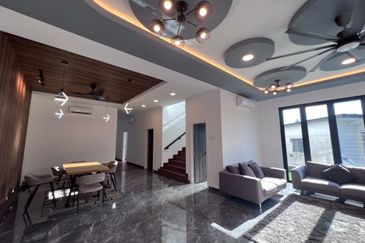
Bukit Gasing, Seksyen 5
Petaling Jaya, Selangor
RM 2,880,000
- beds |
- bath |
4000 sqft
SALE
FEATURED

Taman Nusa Sentral
Iskandar Puteri (Nusajaya), Johor
RM 700,000
4 beds |
3 bath |
1540 sqft
SALE
FEATURED

Eco Botanic
Iskandar Puteri (Nusajaya), Johor
RM 1,250,000
4 beds |
5 bath |
2340 sqft

